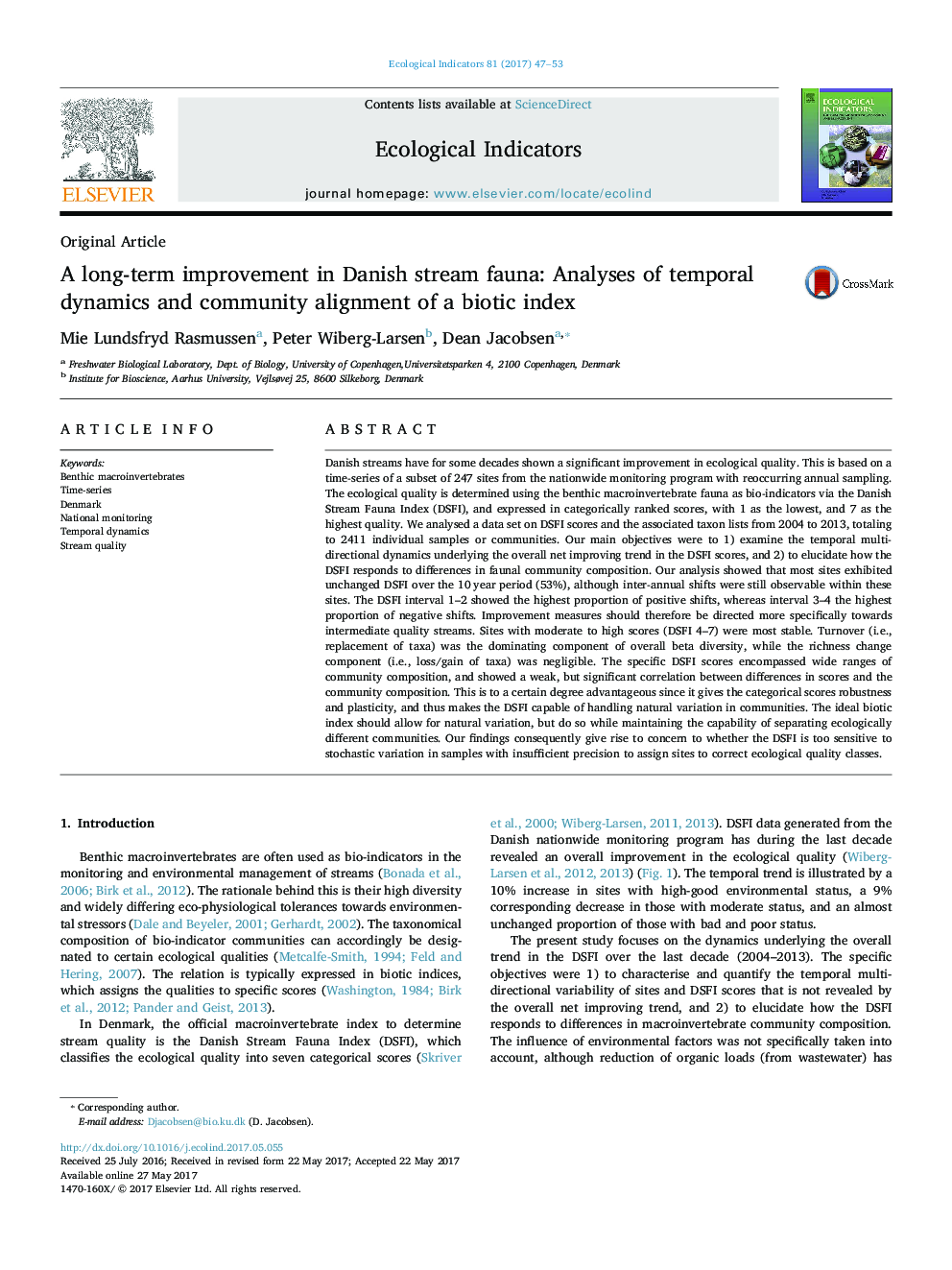| کد مقاله | کد نشریه | سال انتشار | مقاله انگلیسی | نسخه تمام متن |
|---|---|---|---|---|
| 5741409 | 1617121 | 2017 | 7 صفحه PDF | دانلود رایگان |
Danish streams have for some decades shown a significant improvement in ecological quality. This is based on a time-series of a subset of 247 sites from the nationwide monitoring program with reoccurring annual sampling. The ecological quality is determined using the benthic macroinvertebrate fauna as bio-indicators via the Danish Stream Fauna Index (DSFI), and expressed in categorically ranked scores, with 1 as the lowest, and 7 as the highest quality. We analysed a data set on DSFI scores and the associated taxon lists from 2004 to 2013, totaling to 2411 individual samples or communities. Our main objectives were to 1) examine the temporal multidirectional dynamics underlying the overall net improving trend in the DSFI scores, and 2) to elucidate how the DSFI responds to differences in faunal community composition. Our analysis showed that most sites exhibited unchanged DSFI over the 10Â year period (53%), although inter-annual shifts were still observable within these sites. The DSFI interval 1-2 showed the highest proportion of positive shifts, whereas interval 3-4 the highest proportion of negative shifts. Improvement measures should therefore be directed more specifically towards intermediate quality streams. Sites with moderate to high scores (DSFI 4-7) were most stable. Turnover (i.e., replacement of taxa) was the dominating component of overall beta diversity, while the richness change component (i.e., loss/gain of taxa) was negligible. The specific DSFI scores encompassed wide ranges of community composition, and showed a weak, but significant correlation between differences in scores and the community composition. This is to a certain degree advantageous since it gives the categorical scores robustness and plasticity, and thus makes the DSFI capable of handling natural variation in communities. The ideal biotic index should allow for natural variation, but do so while maintaining the capability of separating ecologically different communities. Our findings consequently give rise to concern to whether the DSFI is too sensitive to stochastic variation in samples with insufficient precision to assign sites to correct ecological quality classes.
Journal: Ecological Indicators - Volume 81, October 2017, Pages 47-53
